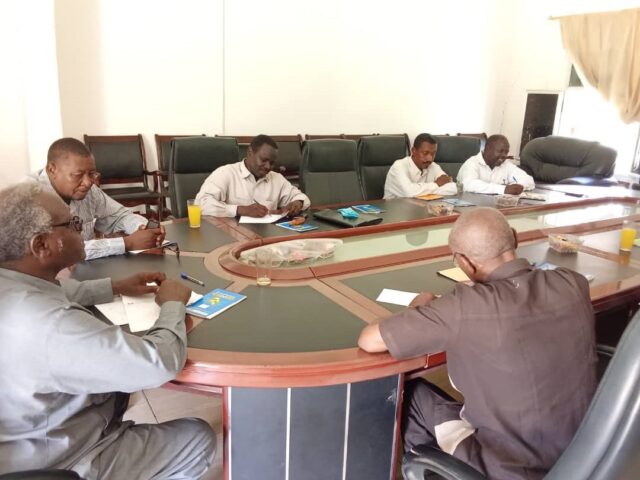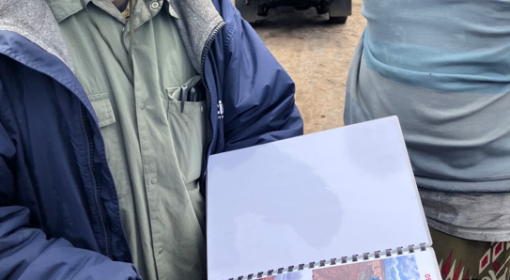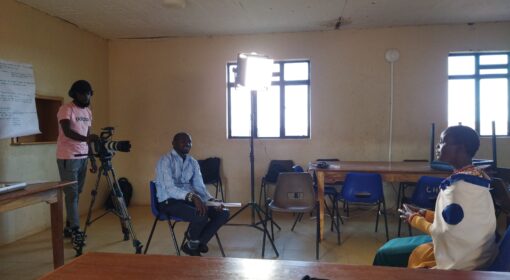By Izzeldin Hashim (SOS Sahel Sudan), Rwnag Mohammed, Femke van Woesik
This blog is part of a dossier on locally-led adaptation, featuring insights and lessons from the Reversing the Flow (RtF) program. RtF empowers communities in Bangladesh, Burkina Faso, Ethiopia, Kenya, and Sudan to build climate resilience through direct funding and a community-driven, landscape approach.
SOS Sahel Sudan, as part of the Reversing the Flow (RtF) program by the Netherlands Enterprise Agency (RVO), adopts a community-driven approach to address critical challenges in water security and climate resilience. In North Kordofan State, particularly Bara locality, frequent droughts, unpredictable rainfall, and declining agricultural productivity are deeply affecting the most vulnerable communities. These communities, who rely on traditional farming and livestock, face growing pressure due to climate change. Community-Led Climate Adaptation in Sudan is central to this approach, ensuring that communities take the lead in organizing and implementing initiatives
Community-Led Structures for Resilience
RtF prioritizes bottom-up decision-making, allowing communities to take the lead in organizing and implementing initiatives. In Bara landscape SOS Sahel hub operates the program through established key structures like Community Grassroots Organizations (GROs), the General Assembly, the Landscape Management Committee (LMC), and the Steering Committee. Together, these bodies enable communities to make decisions and take actions that are directly relevant to their local contexts, ensuring sustainability and community ownership. This blog elaborates on these structures and their role in community-led climate adaptation.

Enabling Community-Led Climate Adaptation
What makes this approach distinct is the integration of democratic processes and community involvement at every stage. Rather than relying on top-down strategies where external actors impose solutions, the RtF approach gives decision-making power to the communities themselves.
By allowing communities to define the scope, goals, and implementation of adaptation projects, the RtF program fosters a strong sense of ownership. This is crucial to the long-term success of these initiatives, as it ensures active participation, commitment to sustainability, and the integration of local knowledge into climate resilience strategies.
How the Committees Work Together
The strength of the SOS Sahel Sudan approach lies in how its various committees collaborate to drive community-led climate adaptation.
Grassroots Organizations (GROs)
GROs are the building blocks of the program, composed of community members who identify local needs and propose relevant projects. These grassroots organizations will be responsible for selecting a representative to join the general assembly, ensuring that every voice is heard in shaping the program’s direction.
The General Assembly: A Platform for Inclusive Decision-Making
The General Assembly represents all the communities involved in RtF and serves as a platform for inclusive decision-making. By providing a space where all community members can express their needs and opinions, the General Assembly fosters a truly participatory environment, ensuring that interventions are community-driven rather than imposed from above. In addition to representing the community, the General Assembly is responsible for electing members to the Landscape Management Committee (LMC), thereby ensuring that leadership remains accountable to the people.
Landscape Management Committee (LMC)
The Committee plays a crucial role in coordinating, cooperating, and advocating for the implementation of community-led climate adaptation and natural resource management initiatives in the Bara landscape. The LMC ensures that initiatives are relevant, well-coordinated, and aligned with both community needs and broader environmental goals. The LMC comprises 25 elected members from GROs, five technical representatives from government bodies (such as agriculture, water, and forestry), and is chaired by the SOS Sahel Sudan Project Manager. This committee is dedicated to:
- Participating in the creation of guidelines and selection criteria for community-led initiatives, ensuring alignment with both project and community goals.
- Identify the target community based on agreed selection criteria that satisfied both project and target community objectives as well (Communities with successful initiatives)
- Supporting communities in implementing their initiatives and ensuring effective monitoring and documentation.
- Coordinating with government technical authorities to ensure project continuity and participating in the evaluation and review of project progress.
- Advocating for community rights through dialogue forums that bring together local authorities and community members to address challenges and share lessons learned.
The Steering Committee: Bridging Community and Policy
The Steering Committee is composed of key stakeholders, including the Leader of the Bara Native Administration and representatives from relevant ministries that align with the program’s objectives. Their responsibilities include identifying target locations, coordinating with humanitarian actors, providing technical support, and overseeing the monitoring and evaluation of the program.
One of the committee’s key strengths is its ability to bridge the gap between community-led initiatives and government policy. By advocating for the RtF approach at both state and federal levels, the committee ensures that the voices of vulnerable communities are represented in policy discussions.
A key element of this empowerment strategy is the inclusion of local leaders, such as the Bara Native Administration leader, in the program’s decision-making structures. The involvement of these local leaders is crucial, as they hold significant influence and trust within their communities. Their deep understanding of local customs, land use, and community dynamics makes them invaluable in guiding the program toward success.
Practical Collaboration and Its Impact
In practice, this approach creates a continuous loop of communication, decision-making, and implementation. GROs at the local level identify challenges and develop initiatives, the General Assembly consolidates these insights, and the LMC takes the lead in coordinating the implementation of solutions and initiatives. Throughout this process, the Steering Committee provides strategic oversight and ensures that government bodies are aligned with community-led initiatives. The effect is twofold:
- Increased Ownership and Sustainability: When communities design and lead the projects, they are more invested in maintaining and sustaining them over time.
- Tailored, Adaptive Solutions: The projects developed through this process are better adapted to the unique environmental, social, and economic circumstances of each community, making them more effective and resilient in the face of climate change.
Learn more about community-led climate adaptation in Sudan here.



